#Peopleops Software
Explore tagged Tumblr posts
Text
The Step-by-Step Process of Implementing Digital Preboarding in Your Organization
Step 1: Setting Clear Objectives
Every journey's success hinges on knowing the destination, and preboarding is no exception. Setting clear objectives is akin to plotting a course on a map, ensuring you reach your desired outcome without unnecessary detours. For organizations, these objectives determine the experience a new hire should have, even before stepping into their role.
So, what might these objectives look like? For one, it could be about instilling a sense of belonging, ensuring that every new team member feels valued and included from the get-go. Another objective might be to familiarize new hires with the company culture, values, and ethos, laying the groundwork for alignment with company goals.
Yet another could focus on logistical readiness, ensuring that the new employee has all tools, resources, and information at their fingertips to hit the ground running on day one.
By defining these objectives upfront, you're setting a roadmap for a successful and enriching preboarding experience.
Step 2: Engaging the Right Stakeholders
A robust preboarding process requires collaboration across various departments. Ensuring each stakeholder knows their role is crucial for a smooth transition for new hires.
Step 3: Choosing Appropriate Digital Platforms
Navigating the myriad options of preboarding tools can feel like standing at the crossroads of a vast metropolis. Each avenue promises unique attractions and potential pitfalls. The challenge lies in discerning the best path to ensure your new hires transition smoothly and efficiently.
Available Platforms
There's no shortage of options in the market. Platforms range from comprehensive Human Resource Information Systems (HRIS) like Workday or BambooHR, which offer preboarding as part of a broader HR suite, to specialized tools such as Talmundo or Enboarder, focused solely on onboarding and preboarding experiences.
Criteria for Selection
Selecting a platform isn't just about flashy features. Here are key criteria to consider:
User-friendliness: The interface should be intuitive, minimizing the learning curve for both HR teams and new hires.
Scalability: Can the platform handle your company as it grows, or will it become obsolete with expansion?
Feedback Mechanisms: A good platform allows new hires to provide feedback, ensuring continuous improvement of the preboarding process.
Cost Implications and ROI:
While it's easy to gravitate towards cheaper solutions, it's imperative to consider the long-term return on investment. A more expensive platform might offer features that drastically reduce onboarding time, lead to better new hire retention, or improve overall employee satisfaction. Always weigh the upfront costs against the potential long-term benefits to find the sweet spot in your platform selection.
Step 4: Crafting Engaging Content
At the core of an effective digital preboarding process is the content that fuels it. Just as a teacher curates lessons to best fit their students, companies must design content that resonates with, educates, and excites their new hires.
Different Types of Content
Videos: Ideal for sharing company culture, tours, or even CEO welcomes. Videos offer a personal touch and can simulate a face-to-face interaction.
Quizzes: They're not just for testing; quizzes can be a fun way to reinforce information, ensuring new hires internalize essential details.
Presentations: Slide decks can offer a structured way to convey processes, company history, or role-specific information.
Striking the Right Balance
While it's vital to provide all necessary details, a barrage of facts can be overwhelming. The secret is in the mix. Weaving in engaging elements like stories or interactive scenarios can help break the monotony and make the learning experience enjoyable.
The Power of Multimedia
Multimedia isn't just about variety; it's about capitalizing on the way we process information. Our brains are wired to retain visual and auditory data more effectively than text alone. Integrating images, sound, and motion can significantly boost understanding and memory retention, ensuring that new hires not only consume content but truly grasp it.
Step 5: Personalization is Key
Using a generic approach in preboarding is like expecting everyone to wear the same uniform regardless of their role—it simply doesn’t cater to individual needs. A one-size-fits-all strategy is inadequate because it overlooks the varied backgrounds, experiences, and expectations of new hires.
Why Generic Doesn’t Cut It
Each person brings unique experiences and skill sets to the table. What's relevant for a software developer might be redundant for someone in sales. Offering a generic experience can lead to disengagement or information overload.
Tailored Approaches
It's essential to modify preboarding based on factors such as role, department, or location. For instance, a finance professional in Europe might need insights distinct from their counterparts in Asia. By creating tailored experiences, we make the preboarding process more relevant and effective.
Leveraging Technology
With the advent of AI and analytics, personalization has reached new heights. These tools can analyze individual interactions and preferences, allowing platforms to adapt content to each new hire’s specific needs and position.
To read more - https://www.squadsy.team/blogs/implementing-a-digital-preboarding-process
0 notes
Text
What is HR Communication?
HR Communication is the deliberate and structured exchange of information between an organization's management and its employees. It's more than just passing on messages; it's about ensuring clarity, understanding, and alignment.
The significance of HR communication is profound in today's dynamic business landscape. It encompasses various messages, from company policies to performance feedback, ensuring every employee feels informed and valued.
But why is it so crucial?
It bridges the gap between management and employees, fostering a two-way dialogue.
It ensures that everyone, regardless of their role, is aligned with the company's objectives.
It provides a platform for employees to voice concerns, offer feedback, and feel connected.
Evolution of HR Communications in the Digital Age
The digital age has revolutionized HR communications in ways previously unimagined. With the advent of technology, traditional face-to-face meetings and paper memos have given way to virtual conferences, instant messaging, and digital HR platforms. These tools have enabled real-time communication, ensuring that information is disseminated quickly and efficiently.
Moreover, the rise of remote work, especially post-pandemic, has further underscored the need for robust digital communication channels. HR departments now rely heavily on technology to onboard, train, and engage employees scattered across different geographies.
This shift has not only made communications more efficient but also more inclusive, ensuring that every employee, whether in the office or halfway across the world, remains connected and informed.
Types of HR Communications
HR Communications encompass a diverse range of methods, each tailored to convey information effectively. From traditional written notes to modern digital platforms, these methods ensure clarity, immediacy, and engagement in organizational dialogues.
1. Written Communication
This traditional form remains a staple in the HR world. Emails serve as a quick means to disseminate information, while memos provide detailed guidelines or updates. Letters, often more formal, are used for official communications such as job offers, promotions, or acknowledgments. The written word provides a tangible record, ensuring clarity and reference for future needs.
2. Non-verbal Communication
Often overlooked, non-verbal cues play a pivotal role in understanding and interpretation. Body language, from a firm handshake to a nod of agreement, conveys feelings and reactions. Facial expressions, be it a smile of appreciation or a frown of concern, offer insights into unspoken emotions, making face-to-face interactions richer and more nuanced.
3. Verbal Communication
Direct verbal interactions remain at the heart of HR communications. Face-to-face meetings allow for immediate feedback and foster personal connections. Phone calls, while lacking visual cues, offer immediacy and personal touch, making them invaluable for quick discussions or clarifications.
4. Electronic Communication
The digital age has ushered in a plethora of electronic communication tools. Webinars facilitate large-scale training sessions or presentations. Virtual meetings bridge geographical divides, ensuring teams, no matter where they are, collaborate effectively. Digital platforms, from HR management systems to instant messaging apps, streamline communications, making them timely, organized, and accessible.
To read more - https://www.squadsy.team/blogs/guide-to-effective-hr-communications
0 notes
Text
5 Must Haves in a Remote-Work Based Pre-Boarding Checklist
1. Digital Onboarding Materials Tailored for Remote Work
Gone are the days of hefty printed manuals and in-person orientation sessions. In their place, we now have a plethora of digital tools and platforms designed to make the onboarding process as smooth as possible, especially for remote teams.
However, it's not just about transitioning from paper to pixels. It's about crafting materials that resonate with the unique challenges and opportunities of remote work. For instance, a digital onboarding guide should not only provide information about the company's policies and culture but also offer insights into best practices for remote work, from setting up a productive workspace to managing time across different time zones.
Interactive e-learning modules, engaging video content, and virtual reality (VR) tours of the company's digital platforms can offer new hires a deep dive into their new roles from the comfort of their homes. These materials can be accessed at their own pace, allowing them to revisit any section they find particularly challenging or interesting.
Moreover, with the rise of AI and machine learning, there's potential for creating personalized onboarding experiences. Imagine a digital assistant that guides a new hire through the onboarding process, answering questions in real-time, and offering recommendations based on their specific role and preferences.
As remote work continues to dominate the professional landscape, it's crucial for companies to invest in digital onboarding materials that are not just informative but also engaging and tailored to the remote work experience. After all, a well-prepared employee is an empowered one, ready to contribute and thrive in their new role.
2. Flexibility and Personalization
In the realm of remote work, one size certainly does not fit all. Every individual has unique needs, preferences, and challenges when working from a distance. Recognizing this diversity is the first step towards creating a pre-boarding experience that truly resonates.
Flexibility in pre-boarding means offering multiple avenues for new hires to access and engage with materials. Whether it's through webinars, interactive modules, or downloadable resources, providing a variety ensures that every individual can find a format that suits their learning style.
Beyond formats, flexibility encompasses timing, pacing, and adaptability. Some might prefer a rapid immersion, while others may want to take things slow. Recognizing these preferences, companies can introduce staggered pre-boarding phases or modular content to cater to varied learning paces.
With technology's aid, personalization becomes even more profound. Tailoring pre-boarding experiences to individual roles or departments ensures relevance. A developer, for instance, might benefit from deep dives into the company's tech stack, while a sales executive might need insights into client engagement strategies.
3. Virtual Tours and Interactive Sessions
The digital workspace offers many advantages but can sometimes feel isolating for new hires. Traditional office tours or face-to-face introductions might be missing, but their digital counterparts can fill the void effectively.
Virtual tours and interactive sessions offer new hires a comprehensive view of the company's virtual ecosystem. Augmented reality can simulate office environments, while interactive webinars can introduce various teams and projects.
Interactive elements, such as Q&A sessions, polls, and quizzes, infuse engagement into these sessions. These tools not only provide clarity but also foster camaraderie among new hires and existing team members.
Recording and archiving these sessions offer another advantage: they become a ready repository for future hires, ensuring consistency in the pre-boarding experience across time.
4. Building a Sense of Community Before Day One
Starting a new job remotely can be a unique challenge. The physical distance might seem daunting, but proactive community-building efforts can bridge this gap effectively.
Assigning a 'welcome buddy' or mentor to every new hire has proven to be a game-changer. This individual, ideally from a similar role or department, becomes the go-to person for any queries or insights, ensuring the new hire never feels lost.
Virtual meet-and-greets are more than just introductory sessions. They're platforms where new hires can showcase their personalities, share experiences, and start building relationships with future colleagues.
Incorporating new hires into communication channels from day one is another crucial step. Observing conversations, understanding team dynamics, and participating in discussions can foster a sense of belonging, making the transition smoother and more enjoyable.
5. Feedback Mechanisms
Understanding the experiences and challenges of new hires is paramount. Feedback mechanisms serve as the bridge to this understanding, allowing companies to tap into the firsthand experiences of their newest team members.
The beauty of feedback lies in its cyclical nature. As new hires navigate their pre-boarding journey, their insights can shed light on areas of excellence and those needing enhancement. This continuous loop ensures that the pre-boarding process remains agile, adapting to the ever-changing nuances of remote work.
Several tools have emerged to facilitate this feedback collection. Digital surveys, for instance, can be tailored to capture specific insights. They can be timed to pop up at various stages of the pre-boarding process, ensuring real-time feedback. Open-ended questions can capture qualitative insights, while Likert scales or multiple-choice questions can provide quantitative data.
Interactive platforms, such as virtual town halls or feedback forums, offer another avenue. Here, new hires can discuss their experiences, share suggestions, and even brainstorm solutions. These platforms not only gather feedback but also foster a sense of community, as new hires see their opinions valued and acted upon.
Another strategy is the one-on-one feedback session. Organized with HR or direct managers, these sessions provide a safe space for new hires to voice their concerns, ask questions, and offer suggestions. The personal touch ensures that feedback is detailed and actionable.
Incorporating these feedback mechanisms into the pre-boarding process ensures that companies remain in tune with the needs and experiences of their new hires. By actively seeking and acting on this feedback, companies can create a pre-boarding experience that is not only effective but also empathetic and evolving
To read more - https://www.squadsy.team/blogs/remote-pre-boarding-checklist
0 notes
Text
5 Must Haves in a Remote-Work Based Pre-Boarding Checklist
1. Digital Onboarding Materials Tailored for Remote Work
Gone are the days of hefty printed manuals and in-person orientation sessions. In their place, we now have a plethora of digital tools and platforms designed to make the onboarding process as smooth as possible, especially for remote teams.
However, it's not just about transitioning from paper to pixels. It's about crafting materials that resonate with the unique challenges and opportunities of remote work. For instance, a digital onboarding guide should not only provide information about the company's policies and culture but also offer insights into best practices for remote work, from setting up a productive workspace to managing time across different time zones.
Interactive e-learning modules, engaging video content, and virtual reality (VR) tours of the company's digital platforms can offer new hires a deep dive into their new roles from the comfort of their homes. These materials can be accessed at their own pace, allowing them to revisit any section they find particularly challenging or interesting.
Moreover, with the rise of AI and machine learning, there's potential for creating personalized onboarding experiences. Imagine a digital assistant that guides a new hire through the onboarding process, answering questions in real-time, and offering recommendations based on their specific role and preferences.
As remote work continues to dominate the professional landscape, it's crucial for companies to invest in digital onboarding materials that are not just informative but also engaging and tailored to the remote work experience. After all, a well-prepared employee is an empowered one, ready to contribute and thrive in their new role.
2. Flexibility and Personalization
In the realm of remote work, one size certainly does not fit all. Every individual has unique needs, preferences, and challenges when working from a distance. Recognizing this diversity is the first step towards creating a pre-boarding experience that truly resonates.
Flexibility in pre-boarding means offering multiple avenues for new hires to access and engage with materials. Whether it's through webinars, interactive modules, or downloadable resources, providing a variety ensures that every individual can find a format that suits their learning style
Beyond formats, flexibility encompasses timing, pacing, and adaptability. Some might prefer a rapid immersion, while others may want to take things slow. Recognizing these preferences, companies can introduce staggered pre-boarding phases or modular content to cater to varied learning paces.
With technology's aid, personalization becomes even more profound. Tailoring pre-boarding experiences to individual roles or departments ensures relevance. A developer, for instance, might benefit from deep dives into the company's tech stack, while a sales executive might need insights into client engagement strategies.
3. Virtual Tours and Interactive Sessions
The digital workspace offers many advantages but can sometimes feel isolating for new hires. Traditional office tours or face-to-face introductions might be missing, but their digital counterparts can fill the void effectively.
Virtual tours and interactive sessions offer new hires a comprehensive view of the company's virtual ecosystem. Augmented reality can simulate office environments, while interactive webinars can introduce various teams and projects.
Interactive elements, such as Q&A sessions, polls, and quizzes, infuse engagement into these sessions. These tools not only provide clarity but also foster camaraderie among new hires and existing team members.
Recording and archiving these sessions offer another advantage: they become a ready repository for future hires, ensuring consistency in the pre-boarding experience across time.
To read more - 5 Must Haves in a Remote Based Pre-Boarding Checklist in 2023
0 notes
Text
5 Reasons Why You Should Improve Your Pre-Boarding
Reason 1: The Modern Job Market:
The job landscape of 2023 is unlike any we've seen before. With the rise of remote work, gig economies, and a greater emphasis on work-life balance, employees now have more choices and flexibility than ever. This shift has given them the upper hand, making it essential for employers to stand out from the very beginning.
Preboarding becomes a critical touchpoint in this context. It's the first real interaction a new hire has with the company after the interview process. A lackluster pre-boarding experience can lead to doubts, second thoughts, and even the risk of new hires entertaining other job offers. On the other hand, a well-executed pre-boarding process can solidify the employee's decision to join, ensuring they start their journey with enthusiasm and commitment.
Moreover, the modern job market has seen a concerning trend: new hires "ghosting" employers. This refers to employees accepting a job offer but never showing up on the first day or leaving shortly after without notice. A robust preboarding process can significantly reduce such occurrences by keeping the new hires engaged, informed, and excited about their upcoming role.
Reason 2: Boosting Employee Retention:
Employee turnover is a costly affair, both financially and operationally. Beyond the obvious recruitment costs, there's the lost productivity, the time spent training a new hire, and the potential negative impact on team morale. In 2023, with the job market's fluidity, retaining talent has become a top priority for businesses.
Enter preboarding. This crucial phase sets the stage for an employee's entire journey with the company. A positive pre-boarding experience can instill confidence in the new hire, assuring them that they've made the right choice. It's the company's opportunity to showcase its values, culture, and commitment to employee growth right from the start.
A study by the Brandon Hall Group found that organizations with a strong onboarding process, which includes preboarding, improve new hire retention by 82 percent and productivity by over 70 percent.
By investing in a comprehensive pre-boarding process, companies can significantly reduce the chances of new hires leaving within their initial months, thereby improving overall retention rates.
Furthermore, a well-structured pre-boarding experience can help new hires integrate faster, feel valued, and become productive members of the team sooner. When employees feel a sense of belonging and purpose from day one, they're more likely to be committed and loyal in the long run.
To read more - 5 Reasons Why You Should Improve Your Pre-Boarding in 2023
0 notes
Text
What is PeopleOps?

In the dynamic world of 2023, where businesses pivot and adapt at lightning speed, there's one constant that remains crucial: people. As you navigate this post, you'll uncover the essence of PeopleOps, a transformative approach that's redefining the workplace.
Gone are the days when HR was just about policies and compliance. Today, it's about creating environments where employees don't just work; they thrive. From the very definition of PeopleOps to its myriad benefits, strategies, and the cutting-edge tools that power it, we've got it all mapped out for you.
What is People Operations?
The term "People Operations" might sound like a buzzword, but it's so much more than that. At its core, PeopleOps is about recognizing the immense value that individuals bring to an organization and ensuring that they're not just seen as numbers or resources, but as integral components that drive a company's success.
Definition and origin of the term
People Operations, often abbreviated as PeopleOps, is a strategic approach to employment that prioritizes the holistic well-being, progress, and results of employees. It's not just about hiring and firing; it's about creating a culture where employees feel valued, empowered, and proud to be a part of the organization.
The term and its philosophy were popularized by tech giants like Google, where Laszlo Bock, a former HR Director, championed the idea that focusing on employee happiness and well-being leads to increased productivity and innovation.
Differentiation from traditional HR
While traditional HR has its roots in administrative functions, legal compliance, and organizational structure, PeopleOps takes a broader view. It's less about policies and more about people. Think of HR as the framework, while PeopleOps is the heart that pumps life into that framework.
It's about facilitating activities that boost employee productivity, from the moment they join to the moment they move on, all while emphasizing human connections, continuous improvement, and employee engagement.
Influence of tech giants like Google
Google's influence in shaping PeopleOps cannot be understated. They recognized early on that for a company to be truly innovative, its employees needed to be at the center of its universe.
By fostering an environment focused on employee happiness, well-being, and continuous growth, Google demonstrated that such an approach doesn't just benefit the employees—it drives business success. This philosophy has since been adopted by numerous organizations worldwide, proving that when you put people first, success naturally follows.
The Benefits of Adopting People Operations
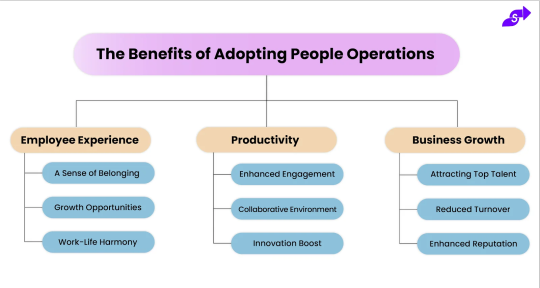
Click here to read more - What is PeopleOps
0 notes
Text
Top Features That Every Employee Onboarding Software Should Have
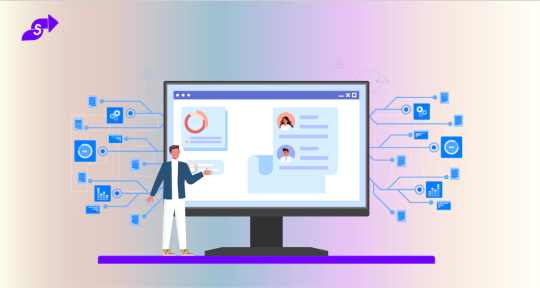
1. Personalized Onboarding Experience
A personalized onboarding experience is a must-have feature. Personalization can be achieved in two ways
The manual, hard way. This is time consuming
The smart way is by using a software like Squadsy or BambooHR that has a sort of mail merge arrangement.
This essential feature helps HR teams by
Automating a lot of the repetitive tasks in the onboarding process thus saving a lot of time while also improving their efficiency.
Decreasing the risk of human error and improving consistency in maintaining a high-quality onboarding experience, regardless of the volume of hires or the workload.
Providing freedom to tailor the onboarding process based on an employee's role, location, and division.
Increasing employee engagement by making new hires feel valued and appreciated. This makes the HR team's job of retaining talent much easier.
Effortlessly scaling the onboarding process without any additional manual work as the software can manage an increasing number of onboarding journeys.
Providing HR teams with actionable data-driven insights about what's working and what's not in their onboarding process. This helps optimize the process to provide a better experience during onboarding.
A personalized onboarding experience, not only saves time for HR professionals but also creates a more engaging, satisfying experience for each new hire.
It makes employees feel valued right from the start, fostering stronger connections with the organization and boosting retention rates.
2. Reporting & Analytics
Considering that losing an employee in the first year can cost thrice their annual salary, it becomes clear why "Reporting & Analytics" is a must-have feature in employee onboarding software.
With this feature HR teams can
Make informed decisions based on tangible data and facts, minimizing guesswork and enhancing precision.
Identify inefficiencies in their processes and take necessary steps to improve them and create better experiences for all stakeholders.
Gauge the effectiveness of their onboarding initiatives by tracking Key Performance Indicators (KPIs).
Ensure compliance by identifying potential issues early, thus preventing legal hassles.
Monitor and improve employee engagement strategies during the onboarding process, leading to better satisfaction and retention rates.
By incorporating visualization and faster reporting capabilities, these inbuilt analytical tools in onboarding software facilitate the transition to a data-driven strategic onboarding process, enhancing overall efficiency.
The end result
Smoother onboarding, happier employees, and a healthier bottom line.
3. Integrations
Integration is a non-negotiable feature for any modern employee onboarding software. It's the key that unlocks efficiency and convenience for HR teams, facilitating smooth and productive onboarding processes.
Integrations is a must in any onboarding software as it helps
With the free flow between systems, eradicating the need for redundant data entry and reducing the risk of errors.
Automate data transfer between systems, this saves precious time that can be used by the HR teams for more strategic tasks.
Improve the experience for HR staff and new hires alike, ensuring a smoother onboarding process.
Maintain uniformity across platforms, guaranteeing that everyone has access to the same, updated information.
Support compliance efforts by ensuring all systems reflect current, accurate data.
Integration is about creating a unified, effective system to create a more streamlined, effective, and enjoyable onboarding process for everyone involved.
4. Cloud Technology
Cloud Technology is a vital feature in today's employee onboarding software. Its capacity to amplify productivity, provide universal access, and fortify security has revolutionized the role of HR teams, paving the way for a fluid onboarding process.
Its importance in an onboarding software is highlighted because it
Lets all stakeholders access the onboarding processes at any time, from anywhere, making the process truly global.
Offers centralized document storage and state-of-the-art security. This diminishes the risks associated with physical document storage and access.
Facilitates seamless integration with other systems. This reduces data redundancy and increases smoother data transfers, creating a more efficient onboarding process.
Provides flexible subscription plans, making it a cost-effective solution for businesses of all sizes. Cloud-based solutions can easily be scaled up or down to match the needs of the business.
Comes with a user-friendly interface and rapidly deployable modules, significantly reducing the time and resources required to onboard a new hire. This results in a quicker, more efficient onboarding process that benefits both the new hire and the HR team.
5. User-Friendly Interface
A user-friendly interface streamlines the user experience, making the onboarding process simpler and more efficient for HR teams and new hires alike.
The importance of a user-friendly interface cannot be overstated as it
Reduces the learning curve for all users, enabling HR teams and new hires to utilize the software's full potential from the get-go. This results in a smoother onboarding process and a more engaging experience for new employees.
Enhances productivity by reducing the time spent navigating complex systems or searching for necessary features. An easily navigable software allows HR teams to focus more on strategic onboarding efforts rather than figuring out the software.
Minimizes errors and confusion by providing clear, easy-to-understand instructions and prompts. This ensures that all users, regardless of their technical expertise, can use the software effectively.
Fosters a positive user experience, increasing user satisfaction and promoting consistent use of the software. A user-friendly interface makes the onboarding process enjoyable, encouraging new hires to engage fully in the process.
Facilitates quick and effective communication between HR teams, managers, and new hires. When software is intuitive and easy to use, sharing information and updates becomes a breeze.
Click here to read more - Top Features That Every Employee Onboarding Software Should Have in 2023
0 notes
Text
What Are Moments That Matter and Why Are They Important?

'Moments that Matter' encompass the everyday interactions that contribute to an employee's work experience. These can swing between positive, negative, or even neutral, but they hold immense influence on how employees perceive their jobs.
These instances offer a golden opportunity to fortify the employer-employee relationship, guiding individuals towards actions that benefit both themselves and the company.
The importance of these moments is profound, directly affecting employee engagement, satisfaction, and retention. When employees feel valued, they are likely to be more invested in their work. According to a Society for Human Resource Management study, valued employees are 70% more engaged, 60% more satisfied, and 35% less likely to leave the company. A study by Deloitte found that 85% of employees believe that their company's culture has a significant impact on their job satisfaction.
We can harness these 'Moments that Matter' to enhance the employee experience in various ways to make sure employees feel connected with their organization and co-workers.
Celebrate employee milestones. Acknowledge their successes to make them feel valued.
Provide professional development opportunities. This encourages growth, leading to increased satisfaction.
Create a flexible work environment. This caters to the evolving work lifestyle, promoting happiness and productivity.
Offer competitive benefits. Fair compensation makes employees feel appreciated, enhancing engagement.
Be a good listener. This simple act can make employees feel heard and valued.
Why Should You Take the ‘Moments That Matter’ Approach?
Adopting the 'Moments that Matter' approach in managing employee experiences can offer significant benefits to organizations.
Here's why this philosophy is increasingly essential in our evolving work environment:
Adaptation to the Remote and Hybrid Work Environment: In the era of remote and hybrid work, we often miss the informal hallway interactions and coffee break conversations. These fleeting moments, often unnoticed, play a significant role in building relationships among coworkers.
Strategically planning for moments that matter helps foster a sense of connection within remote or hybrid teams. It equips managers and employees with the guidance necessary to acknowledge significant events, creating a more inclusive and aware work culture.
Enhanced Performance: Today's work environment can often be ambiguous. The lack of clear expectations can breed uncertainty and anxiety among employees. Defining moments that matter and creating guidance around them enhances clarity, helping employees perform better and feel more confident.
Structuring and Strategizing Abstract Concepts: Concepts such as "employee experience" or "company culture" can often seem nebulous. Identifying moments that matter within your organization allows you to create a strategic plan, providing a clear path towards an improved work culture rather than striving towards vague goals.
The above quote perfectly illustrates the power of these moments, emphasizing their profound effect on employee morale and engagement.
Taking the 'Moments That Matter' approach is not merely a one-off project, but a continuous effort to create a workplace that employees love and where they can thrive. It involves being proactive in creating positive experiences rather than merely reacting to negative events.
In doing so, we foster a healthier, more engaged, and productive workplace that truly values its employees.
Click here to read more - All You Need to Know About Moments That Matter in 2023
0 notes
Text
List of Top 7 HRIS Software for HR Teams in 2023
1. Squadsy
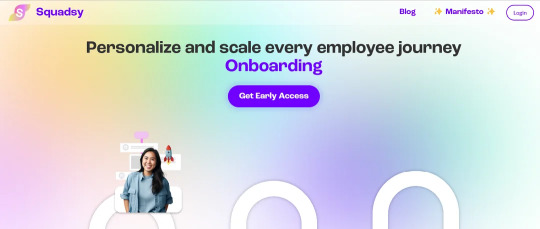
Squadsy is an employee experience and onboarding tool that is designed to help HR teams and PeopleOPS teams streamline, automate, personalize and scale their processes to improve efficiency.
The tool is designed to reduce manual effort of HR professionals so that they can concentrate on more important and strategic tasks such as building and promoting good company culture, employee bonds, well-being, etc.
Squadsy is an optimal choice for organizations aiming to:
Cut short the manual tasks burdening their HR department.
Optimize the entire boarding process - pre-, on-, and post-.
Design a customizable and easily scalable journey experience for all employees, regardless of their role or location.
Curtail employee turnover and enhance retention by fostering stronger connections with the company.
Recognize significant milestones in employees' lives such as birthdays or work anniversaries, seizing every chance to express gratitude, acknowledgment, and praise.
Key Feature
THE JOURNEY FEATURE
Squadsy's Journey feature is an indispensable tool for HR practitioners seeking to streamline the employee experience, spanning from pre-onboarding to offboarding.
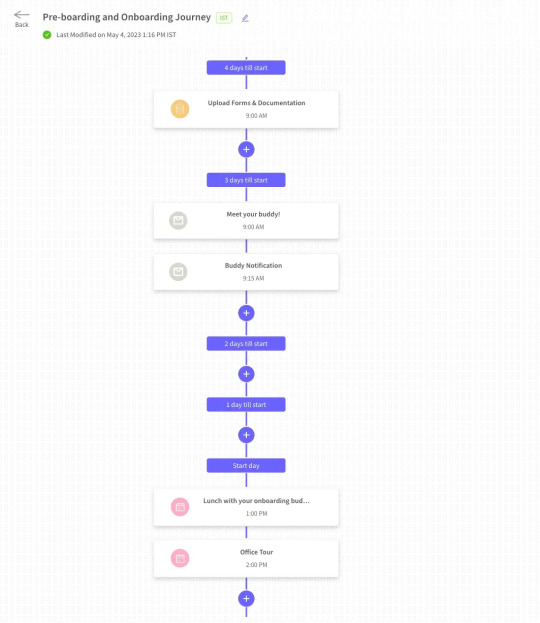
By establishing 'Rules' and 'Actions', this feature automates procedures such as email dispatches, Slack messages, and ticket generation in task management platforms like Asana, Trello, or Jira.
The feature's superior timezone management for global teams and integration with HRIS, ATS, email, and task management systems enhance communication and engagement between HR, new hires, and other stakeholders, such as IT teams or onboarding companions.
Integrations
Squadsy has a wide range of integrations with many communication, HRIS, ATS and task management tools. Some of the available integrations are:
Gmail
Outlook
Slack
Keka HR
Bamboo HR
Workday
Asana
Trello
Jira
2. BambooHR
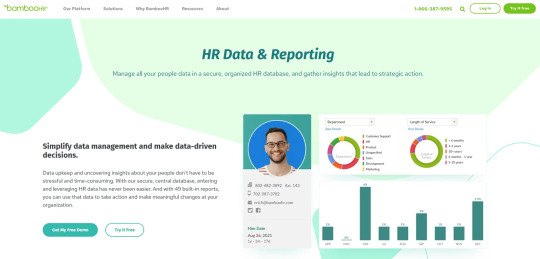
BambooHR is an HR software designed for small businesses. It centralizes and simplifies core HR operations, particularly approval workflows, into one system, replacing cumbersome spreadsheets. This allows HR teams to focus on significant tasks that directly contribute to the broader organizational objectives.
However, as a company grows, it may need more features or services, which BambooHR provides through add-ons or an upgrade to an advanced plan. While it does offer add-ons for payroll and benefits, it's better suited for businesses that already have these services. Overall, it's a solid tool for automating and streamlining HR operations.
Key Features
Streamlined HR Workflows
BambooHR's customizable workflow feature facilitates the automation and delegation of approval workflows. This significantly reduces data entry tasks and prevents work from accumulating, resulting in substantial time savings.
Robust Reporting & Analytics
BambooHR equips HR teams with the capacity to swiftly generate reports for data analysis and informed decision-making. The reporting and analytics tool seamlessly integrates with all other features, enabling the creation of a wide array of reports in mere minutes.
Efficient Applicant Tracking System (ATS)
The ATS feature systematically manages applicant information throughout the recruitment phase. This ensures that HR professionals can concentrate on identifying the right candidates for job vacancies and deliver a superior hiring experience.
3. Zenefits

Zenefits is an HR software tailored for organizations that emphasize benefits administration. It offers flexibility with brokered benefits at no extra charge, or the option to use your own broker for a small fee per employee per month.
Zenefits suits more mature companies with in-house HR expertise that require minimal support from their HR software provider.
Key Features
Extensive Benefits Administration
The tool includes dental, vision, commuter, and 401(k) benefits, among others. Users have the freedom to engage their preferred broker, offering flexibility in benefits packages.
Time Management Tools
Zenefits boasts time tracking and leave management utilities, which sync with payroll, benefits, and in-built scheduling. These tools enhance workforce time management and offer visibility into workforce presence and schedules.
Synchronized Time Tracking
Included in the base plan, Zenefits' synchronized time tracking tools outperform many competitors, contributing to efficient and user-friendly time-off management.
4. Workda
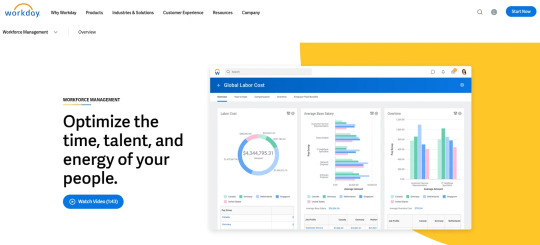
Workday is an extensive human resource information system offering a suite of integrated products to streamline your team management processes from a single platform.
From financial management to human capital management, strategic sourcing to adaptive planning, Workday covers all essential aspects, ensuring efficient and effective team operations.
Key Features
Intuitive Analytics and Reporting
Workday provides an easy-to-use interface, making analytics and reporting tasks straightforward, which enables more informed decision-making and strategy development.
Integrated Payroll
The platform simplifies payroll management by integrating time cards, taxes, and benefits, thereby eliminating uncertainties and ensuring accurate and timely payroll processing.
Effective Talent Management
The tool offers comprehensive talent management tools that assist in tracking and onboarding new hires. It automates paperwork and securely stores data, thereby easing the burden on HR administrators and enhancing overall efficiency.
5. monday.com
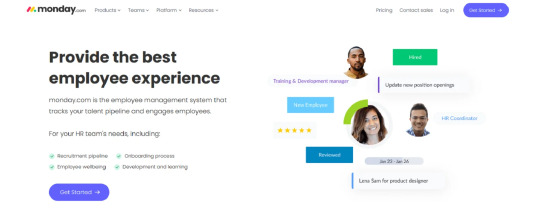
monday.com is another well known HRIS platform, enabling efficient tracking of employees' hours and the new hire pipeline, while facilitating employee engagement programs.
Trusted by renowned global businesses, this dynamic system offers extensive features suitable for small to large enterprises. Its various plans offer added capabilities and storage, allowing for scalability as business needs evolve.
Key Features
Customizable Boards
monday.com offers up to three customizable boards even in its free plan, allowing HR admins to organize and track important HR tasks effectively.
Various Plan Options
The platform provides multiple plan options, each offering increased features like additional storage, guest access, various view options, and more automations. This allows for scalability as per your organization's needs.
Wide Range of Templates
With access to over 200 templates, administrators can create unlimited documents, enhancing the speed and ease of HR operations and documentation.
Click here to read more - Top 7 HRIS Software to Manage Employee Data in 2023
0 notes
Text
Top 10 HR Trends to Retain & Attract Top Talent in 2023

Based on our research and study of emerging trends in the HR industry we have identified the 5 most important and prominent ones that are revolutionizing how people work in modern times.
We hope this article sheds light on how better HR professionals can improve workplace culture, employee experience and happiness at the same time. So without further hold up let’s dive right in.
Trend 1: The shift to hybrid work
The shift to hybrid work, accelerated by the COVID-19 pandemic, brings both opportunities and challenges for HR in 2023. Among the key benefits, a Stanford University study found a 13% productivity boost for remote workers, and hybrid models can promote improved work-life balance. Financially, employers can save an estimated $11,000 per employee, according to the Society for Human Resource Management.
However, challenges include the necessity for strong communication tools and a potential sense of social isolation among remote employees.
To successfully transition to a hybrid model, organizations should implement clear work policies. Here are a few strategies to stay flexible to adapt to changes:
Develop a transparent hybrid work policy: Define clear expectations for remote employees, including obligatory office days.
Equip employees with necessary tools: Provide a comfortable home workspace with access to essential technology and resources.
Encourage regular communication: This can involve check-ins, team meetings, and social activities.
Foster flexibility and adaptability: As the hybrid work environment evolves, embrace changes to policies or work methods.
Trend 2: A focus on employee well-being
A satisfied and healthy workforce not only boosts productivity but also drives engagement. To harness these benefits, HR professionals must adopt initiatives focusing on stress management, mental health support, and comprehensive wellness programs.
An unwavering focus on employee well-being isn't just a trend, but a business imperative. Companies with high levels of employee engagement typically outperform their counterparts in terms of productivity, profitability, and innovation. Supporting employee well-being isn't a one-off task, but a continuous process requiring consistent effort and regular evaluation.
So how can employers support this crucial aspect of their workforce? A few strategies include:
Flexible work arrangements: Implementing telecommuting and flextime can empower employees to achieve a healthier work-life balance.
Mental health resources: Mental health is equally as vital as physical health. Providing access to resources such as employee assistance programs and on-site counseling can significantly contribute to overall well-being.
Positive work culture: A work culture where employees feel valued, respected, and supported can boost morale and productivity. Promoting community spirit, diversity, inclusion, and professional development opportunities can create such an environment.
Trend 3: The importance of employee engagement and experience:
Employee engagement and experience have emerged as key drivers of organizational success. When employees are deeply invested in their roles and have a positive experience at their workplace, they tend to be more productive, innovative, and likely to stay with the organization longer.
Employee experience refers to the collective experiences an employee has within an organization - from onboarding and interactions with colleagues and managers, to the broader organizational culture and work environment.
To enrich employee engagement and experience, organizations can:
Set clear, meaningful goals: Clarity of expectations and understanding the importance of one's work contribute to a sense of purpose.
Empower employees: Let employees voice their ideas and concerns and have a say in their work processes.
Foster a positive work environment: A safe, comfortable workspace and a culture that values respect and inclusion enhance overall employee experience.
Transparency is critical: Keeping employees informed about organizational changes and decisions builds trust. This can lead to increased employee engagement and a positive work experience.
Click here to read more - Top 10 HR Trends to Retain & Attract Top Talent in 2023
0 notes
Text
5 Best Examples of Employee Onboarding Programs
Example 1: Pre-Onboarding Communication
The journey into a new role begins long before the first day on the job; it's in the anticipatory period leading up to it where the foundation of the onboarding experience is laid. The effectiveness of your pre-onboarding communication process can significantly influence how seamlessly new hires integrate into their roles and the organization at large.
Imagine the potential of turning the usual pre-first-day jitters into a sense of excitement and preparedness. This can be achieved by regularly connecting with your future employees, giving them a peek into what awaits them.
A series of well-crafted emails, for example, could detail what their first day would look like, introduce them to their new team, provide some fun facts about the organization, or share the company's latest success story.
Moreover, you could leverage employee onboarding software to streamline this communication. An interactive onboarding portal, perhaps, could offer a one-stop solution where new hires can explore their job details, understand their roles, complete preliminary paperwork, and even participate in virtual ice-breaking activities. This could range from a simple quiz about the company to a virtual tour of the office.
By ensuring open channels of communication, you set the stage for a robust onboarding experience. It sends a clear message to your new hires: You are valued, we are prepared for your arrival, and we are eager to help you succeed.
Such a nurturing approach to pre-onboarding communication can significantly reduce first-day anxieties and build a strong foundation for a fruitful relationship between the new hires and the organization.
Example 2: Clear and Comprehensive Role Description
One of the pivotal steps in crafting an effective onboarding process is ensuring that your new hires have a crystal-clear understanding of their roles. It might seem like a basic requirement, yet the lack of a well-defined role description can lead to confusion, misalignment, and even frustration for your new team member.
The goal is to move beyond a conventional job description to a comprehensive understanding of how their role fits into the larger organizational puzzle.
This implies elucidating not just the 'what' of their job—the tasks and responsibilities—but also the 'why'—how their contributions tie into the company's objectives and impact its success.
Consider employing interactive sessions or workshops that allow your new hires to delve deeper into their roles. These could include detailed discussions with team leads, exposure to relevant projects, or even shadowing sessions with seasoned employees. Equally crucial is defining performance expectations and success metrics clearly and objectively. This could be further reinforced with regular check-ins during the initial months.
By providing a well-rounded view of their role, you enable new hires to visualize their journey within the organization. This clarity can significantly enhance their sense of purpose, job satisfaction, and engagement levels.
Furthermore, it equips them to contribute effectively and meaningfully from early on, accelerating their transition from being a new hire to a fully integrated team member.
Example 3: A Warm Welcome With A Welcome Kit
The power of a genuine welcome on the first day of work cannot be underestimated. It's the first tangible experience a new hire has with your organization, setting the tone for their tenure.
This warm welcome, coupled with a thoughtful welcome kit, can create an indelible first impression, making your new team members feel truly valued and welcomed.
Begin by creating a warm and personalized welcome experience. Whether it's a cheerful welcome banner, a team breakfast, or a friendly meet-and-greet session, these gestures can infuse a sense of belonging from the get-go. Don't underestimate the value of the simple act of introductions; ensuring that everyone in the team takes the time to personally welcome the newcomer can make a significant difference.
In addition, consider offering a welcome kit tailored to your new hire's needs. This could include practical items like company merchandise, office supplies, or a guidebook with essential details about the organization. You could even add a personal touch by including a handwritten welcome note or local treats. If your organization operates remotely, consider mailing the kit to your new hire's home or providing a digital equivalent filled with useful e-resources.
A warm welcome and a well-curated welcome kit serve as positive reaffirmations of your new hire's decision to join your organization and nurture a strong relationship between your new hires and your company.
Click here to read more - 5 Best Examples of Employee Onboarding Programs

#people management software#employee onboarding software#hr automation software#employee experience management platform#Design Thinking in HR#Peopleops Software#Employee Journey Mapping Tools#Internal Communication Strategy Template
0 notes
Text
The Importance and Various Ways of Showing Appreciation at a Workplace
Acknowledging the importance of employee appreciation is one thing; taking action to cultivate a culture of appreciation is another. This endeavor may seem daunting, but in reality, it's about integrating simple, thoughtful gestures into your workplace routines.
Let's explore some methods of showing appreciation at the workplace.
Tangible Rewards
Tangible rewards provide a physical manifestation of recognition. They come in various forms and sizes, from small tokens to more substantial rewards:
Gift Cards and Bonuses: Monetary rewards such as gift cards or bonuses can be effective tools to show appreciation. They offer employees the freedom to treat themselves to something they might not ordinarily purchase.
Paid Time Off: Another tangible way to show appreciation is by offering additional paid time off. This not only acknowledges employees' efforts but also demonstrates a commitment to their work-life balance.
Company Swag: Branded merchandise can be a fun and cost-effective way to show appreciation. Whether it's a stylish company t-shirt, a useful gadget, or a chic coffee mug, employees often appreciate these tokens of recognition.
Non-Tangible Rewards
Non-tangible rewards, though costless, can sometimes mean even more than tangible ones. They hinge on the aspect of personal connection and recognition:
Public Recognition: A shout-out at a team meeting, a feature in the company newsletter, or a post on the company's social media channels can significantly boost an employee's morale.
Thank-you notes: Personalized thank-you notes can make a big impact. Taking the time to write a heartfelt note shows that you not only appreciate the employee's work but also the person behind that work.
Listening to Your Employees: Regularly check-in with your employees, ask for their opinions, and genuinely listen to what they have to say. This can make employees feel valued and heard, a key facet of showing appreciation.
Click here to know more - The Importance and Various Ways of Showing Appreciation at a Workplace

#people management software#employee onboarding software#hr automation software#employee experience management platform#Design Thinking in HR#Peopleops Software#Employee Journey Mapping Tools#Internal Communication Strategy Template#Moments that matter employee experience Tools
0 notes
Text
How to Create an Onboarding Course for New Hires

The delight of securing a new hire can swiftly dissolve into dread at the thought of their onboarding process. Memories of fumbling through stacks of policy documents, chaotic training sessions, and new recruits feeling isolated echo loudly, don't they? These haphazard introductions often fail to immerse the fresh faces in the company culture or provide them a smooth transition.
What if there was a way to convert this stressful, confusing journey into an engaging, enlightening experience? One where new employees are not just told, but shown the path to blend into their roles seamlessly, understanding their responsibilities and the company's vision?
A well-structured onboarding course is the panacea to these struggles. It not only eases the new hires into their roles but also boosts their productivity and retention rates.
How to Create an Onboarding Course
Step 1: Define your Goals
The foundation of any effective onboarding course lies in clearly defined goals. What do you wish to achieve with this program? Perhaps you aim to acclimatize new hires to the company culture or quickly bring them up to speed with their responsibilities.
Maybe your goals encompass both, or go beyond, reaching out to inspire a sense of loyalty and commitment towards the company. Identifying these objectives early will guide the creation process, ensuring it aligns with the desired outcomes
Step 2: Identify your Audience
Having set your goals, it's time to focus on the course's recipients - the new employees. Their needs, expectations, and existing knowledge play a critical role in shaping the course.
Are they fresh graduates or industry veterans? Does their role demand technical prowess or creative flair? The more you understand about them, the better you can tailor the course to resonate with their aspirations and fill knowledge gaps.
Step 3: Gather Content
Now, with clear goals and audience understanding in place, begin gathering content for the course. This information could range from the company's history, mission, and values to the nitty-gritty of their specific roles.
Don't overlook the elements that add a personal touch - the stories that shaped your company, your vision for the future, the role they play in it, and the moments that matter in creating an exceptional employee experience. The goal is to provide a comprehensive picture that blends the individual, the role, and the company into a cohesive narrative.
Click here to read more - How to Create an Onboarding Course for New Hires
#Peopleops Software#Moments that matter employee experience Tools#pre onboarding solutions#people management software#employee onboarding software#hr automation software#employee experience management platform#Design Thinking in HR#Employee Journey Mapping Tools#Internal Communication Strategy Template#Employee Experience Platform
0 notes
Text
How to Choose the Right Employee Onboarding Software to Boost New Hire Experience and Engagement

Choosing the right onboarding software is not just about ticking boxes. It's about understanding your organization's needs and aligning them with the features that will most effectively meet those needs. Here's how you can break down your decision-making process.
User-friendly Interface
A user-friendly interface that's intuitive, clean, and easy to navigate is essential. It streamlines the onboarding process and makes life easier for everyone involved. You don't want your new hires or HR team to spend valuable time deciphering how to use the system. Instead, they should be able to quickly find the information they need and focus their energies on the actual onboarding process. This includes easy access to training modules, policy documents, and any other essential onboarding materials.
2. Integration with Other HR Systems
An isolated onboarding software is like an island – disconnected and less effective. The software you choose needs to be able to seamlessly integrate with other HR systems like payroll, benefits, and performance management platforms.
A well-integrated system removes the need for duplicating data entry, reducing the likelihood of errors and saving considerable time. Furthermore, it provides a more streamlined experience for new hires, as they can access all their necessary information and resources from one place. When your systems talk to each other, everyone benefits.
3. Variety of Training Modules
The days of one-size-fits-all training are long gone. People learn differently, at different paces, and have different skill sets. Recognizing this diversity is key to creating a successful onboarding experience.
Software that offers a variety of customizable training modules enables you to provide a more personalized onboarding experience. Whether it's interactive videos, written materials, quizzes, or a mix of these, being able to choose and customize training modules allows you to cater to individual learning styles. This not only enhances the learning experience but also encourages engagement, as the new hires can learn in a way that suits them best.
4. Track New Hire Progress
Feedback loops are critical in any learning environment, and onboarding is no exception. The ability to track a new hire's progress through the onboarding process allows HR teams to offer timely and targeted feedback, increasing the efficacy of the training.
Your software should offer analytics capabilities, providing insights into each new hire's progress. This feature allows you to see where they might be struggling or excelling, and you can adjust their training accordingly. It's about ensuring no one is left behind and that the onboarding process is as beneficial as possible for every new hire.
Click here to read more - How to Choose the Right Employee Onboarding Software
#people management software#employee onboarding software#hr automation software#employee experience management platform#Design Thinking in HR#Peopleops Software#Employee Journey Mapping Tools#Internal Communication Strategy Template#Moments that matter employee experience Tools#Employee Experience Platform#pre onboarding solutions
0 notes
Text
5 Tips to Improve Employee Engagement in 2023

What is Employee Engagement
Employee engagement is much more than just a corporate buzzword. It signifies an emotional commitment that an employee has towards their organization and its goals. Engaged employees don't just work for a paycheck or the next promotion; they are emotionally invested in the organization's success and go the extra mile to contribute to it.
The importance of employee engagement cannot be overstated. Engaged employees are not only more productive and efficient but also exhibit lower turnover rates, reducing costs related to hiring and training new staff.
5 Powerful Tips to Improve Employee Engagement in 2023
Recognize and Show Appreciation
Encourage Interaction and Improve Communication
Invest in Your Employees
Provide a Good Onboarding Experience
Implement Promotion and Incentive Policies
Click here to read more - Tips to Improve Employee Engagement
#pre onboarding solutions#Peopleops Software#Moments that matter employee experience Tools#people management software#employee onboarding software#hr automation software#employee experience management platform#Design Thinking in HR#Employee Journey Mapping Tools#Internal Communication Strategy Template#Employee Experience Platform
0 notes
Text
5 Benefits of Using Employee Onboarding Software in 2023
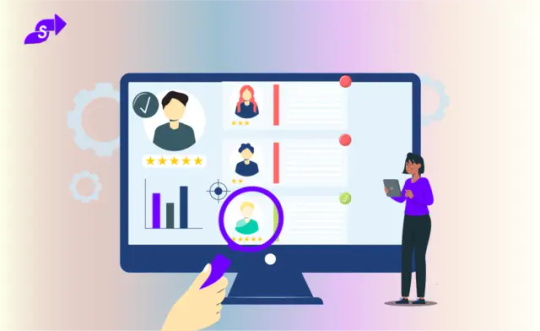
One factor that has remained consistent in every organization irrespective of size, industry, location, is the significance of a well-structured employee onboarding process. Effective onboarding not only smoothens the transition for new hires, it also establishes a strong foundation for their future productivity, job satisfaction, and loyalty to the organization.
However, achieving this level of efficiency in onboarding isn't always a walk in the park due to several challenges in the process.
In this article, we'll look at the challenges that HR professionals, employee experience teams and PeopleOps teams face with the traditional onboarding process and 5 key benefits of using employee onboarding software in 2023 to overcome these challenges.
5 Benefits of Using Employee Onboarding Software
1. Managing All Activities in One Place
2. Maintain Consistency and Scalability of Onboarding Process
3. Reduce Manual Work
4. Easily Track the Progress of New Hires
5. Improve Employee Engagement
Click to read more - Benefits of Employee Onboarding Software -
#pre onboarding solutions#Moments that matter employee experience Tools#Peopleops Software#people management software#employee onboarding software#hr automation software#employee experience management platform#Design Thinking in HR
0 notes